Introduction
In the modern SEO landscape, authority and trustworthiness are critical factors for achieving and maintaining high rankings on search engine results pages (SERPs). Building backlinks from high-authority websites serves as a cornerstone of authority building. This article delves into actionable strategies and real-world examples to help businesses establish a robust backlink profile while adhering to ethical practices.
Example: A Health Tech Company’s Journey
A health tech company specializing in telemedicine sought to improve its online visibility and domain authority (DA). The company identified reputable industry blogs and platforms to collaborate on guest posting opportunities. By publishing valuable content on these authoritative sites, the company grew its DA from 40 to 60 within a year, resulting in a 50% increase in organic search traffic.
What They Did Right:
- Targeted Guest Blogging: They partnered with health industry blogs with DA higher than 60, ensuring alignment with their niche.
- HARO Campaigns: The company responded to journalist queries through Help a Reporter Out (HARO), earning backlinks from high-profile publications.
- Quality Over Quantity: They focused on fewer, high-quality backlinks instead of a high volume of low-quality ones, which aligns with Google’s algorithm preferences.
Actionable Strategies for Backlink Building
Here’s how your organization can adopt ethical backlink-building practices:
1. Utilize HARO (Help a Reporter Out)
HARO connects businesses with journalists seeking expert opinions for articles. By providing valuable insights or data, businesses can earn mentions and backlinks from reputable publications.
- Example: A fitness tech company secured a backlink from Forbes by contributing expert advice on wearable technology trends.
- Application: Dedicate team resources to monitor HARO queries daily. Ensure responses are timely and relevant to increase your chances of getting featured.
2. Guest Blogging
Publishing content on industry-relevant blogs builds authority and drives referral traffic.
- Example: A SaaS company improved its traffic by publishing guest posts on tech blogs like TechCrunch and Medium, linking back to its core services.
- Application: Identify blogs within your niche using tools like SEMrush or Ahrefs. Pitch content ideas that align with the blog’s audience and provide unique insights.
3. Develop PR Campaigns
Public relations campaigns can enhance brand awareness and earn backlinks from credible sources.
- Example: A startup launched a data-driven campaign about workplace productivity trends, earning coverage and backlinks from outlets like Business Insider and The Guardian.
- Application: Use proprietary data to create shareable content, such as infographics or white papers, and pitch them to media outlets.
4. Leverage Link Reclamation
Identify broken links pointing to your website or your competitors’ websites and reach out to webmasters to fix or replace them with your content.
- Example: A marketing firm found outdated links to a competitor’s blog and pitched their updated content to replace them, earning high-authority backlinks.
- Application: Use tools like Ahrefs or Broken Link Checker to identify opportunities for link reclamation.
Building Relationships with Authoritative Websites
A strong backlink strategy isn’t just about securing links—it’s about building relationships that position your business as a thought leader.
1. Collaborate with Influencers and Experts
Collaborate with well-known figures in your industry to co-create content or participate in podcasts/webinars. Their endorsement often leads to organic backlinks.
2. Sponsor or Host Events
Sponsoring industry events often includes a backlink from the event’s website. Hosting events or webinars can also attract links from participants and attendees.
3. Build Internal Link Authority
Don’t underestimate the power of a solid internal linking strategy. Link your best-performing pages to other key pages to maximize link equity distribution.
Recommended Tools for Backlink Strategies
- Ahrefs: For backlink analysis and competitive insights.
- Moz Link Explorer: To assess domain authority and identify link-building opportunities.
- BuzzStream: For managing outreach campaigns effectively.
- Google Analytics: To track referral traffic and evaluate the impact of backlinks.
Flowchart: The Backlink Building Process
Below is a visual representation of an effective backlink-building strategy.
- Research & Planning
- Define target audience.
- Identify high-authority websites.
- Use tools like Ahrefs to analyze competitors.
- Content Creation
- Produce guest posts, infographics, and whitepapers.
- Create sharable, link-worthy content.
- Outreach
- Pitch ideas to target websites.
- Use tools like BuzzStream to manage communication.
- Link Acquisition
- Secure backlinks via HARO, PR campaigns, or guest blogging.
- Monitor link performance with Moz or SEMrush.
- Monitoring & Optimization
- Track performance using Google Analytics.
- Refine strategy based on ROI.
Why Ethical Backlink Building Matters
Backlinks are still a primary ranking factor in 2025, but spammy or unethical practices can harm your website’s reputation and rankings. Focusing on quality, relevance, and relationship-building ensures sustainable growth and positions your brand as a trusted authority in your industry.
By applying the strategies outlined above, businesses can build a resilient backlink profile that drives traffic, improves rankings, and enhances overall online visibility.
These examples and applications will make the article actionable, relatable, and engaging for readers interested in technical SEO trends and tactics for 2025.




